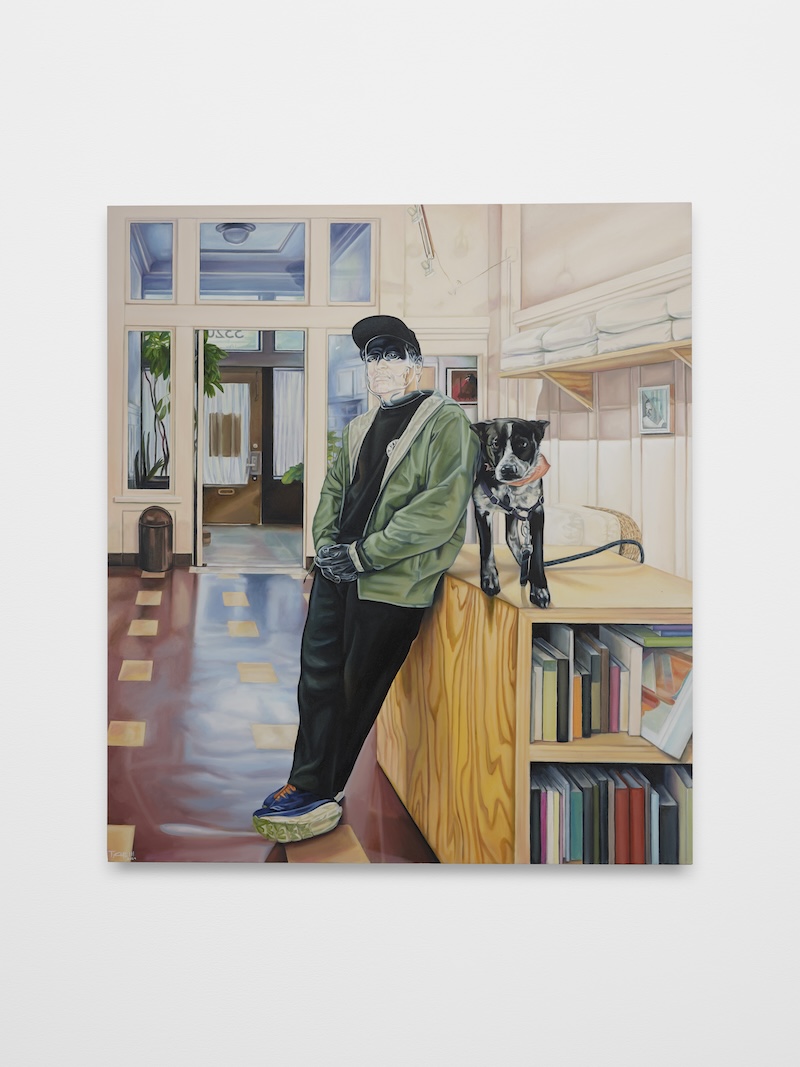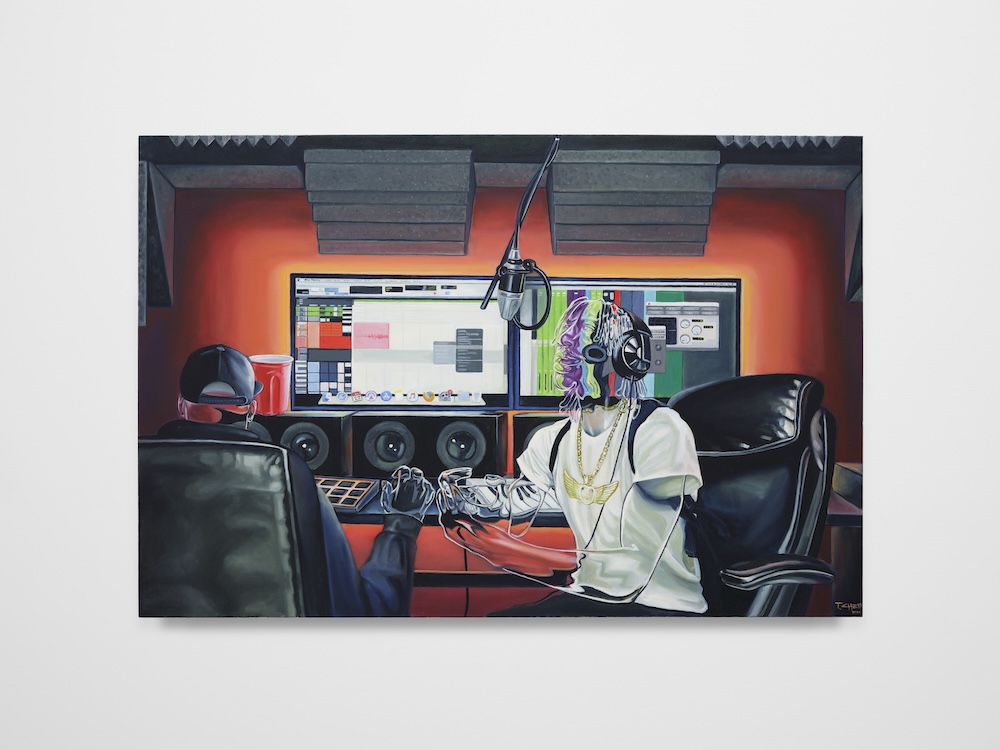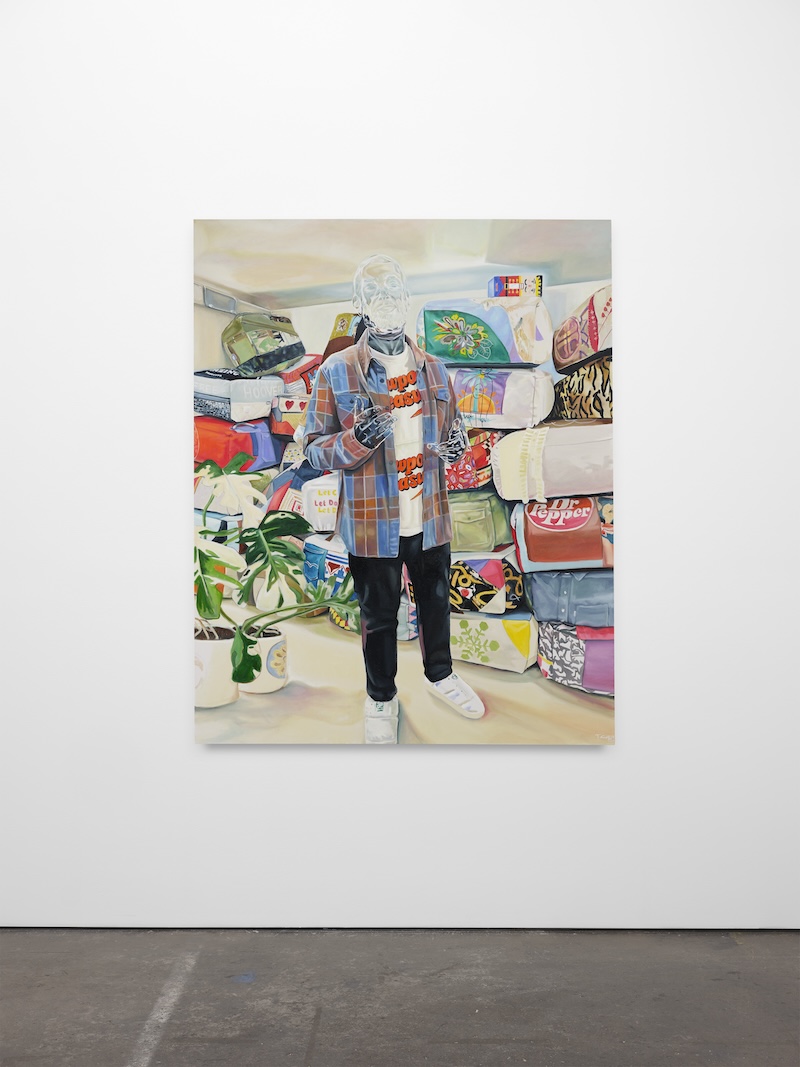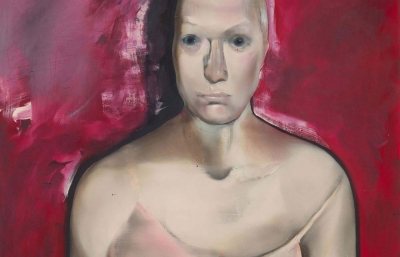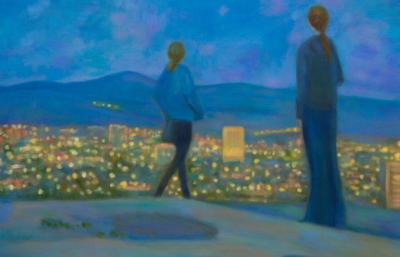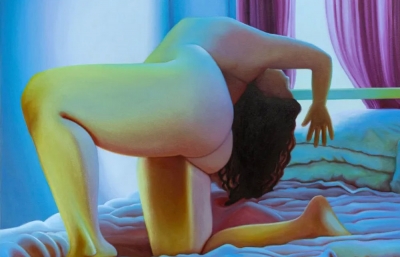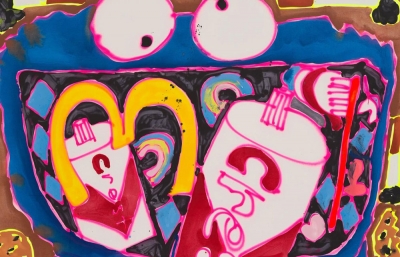Troy Lamarr Chew II learned a lot from being an Uber driver, and his observations sort of speak to a universal understanding of how we have absorbed tech into our daily lives. When we asked Chew a few years ago about being a driver, he told us, "... it is kind of fucked up when people don't treat you like a human and they just hop in your car and then are just on mute, and don't look up at all; they’re just in their own world. That's what inspired the first invisible man painting because I was feeling like an invisible human. And then I would go to the studio and make art and be more invisible and then have a presence on social media, but my art is the presence and then I'm still invisible. And it was just a whole bunch of me. Where am I? Hello?"
It's been a few years since this conversation, but Chew is intently working on the "invisible" series, this time applying it to his friends and family in a new exhibtion at Altman Siegel in San Francisco. Historically, in terms of portrait painting, Chew is changing the game here, rather taking away the subject rather than the "Eurocentric canonical portraiture" that the gallery notes. That in itself is an act of power, challening the history of painting and how we see not only how we lack acknowledgement to those around us, but who we canonzing. Chew canonizes those around him, his friends, his family, those working around him. It's a beautiful and powerful statement of how we see, what we see and what the artist needs us to see. —Evan Pricco




